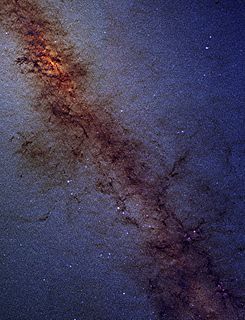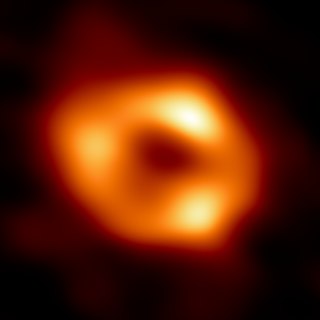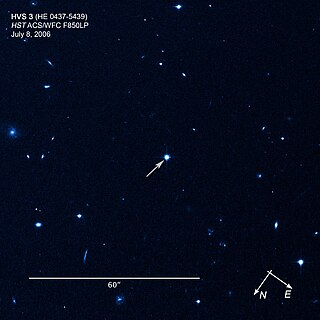Plot summary
Exultant is set in Baxter's "Xeelee Sequence" twenty thousand years into the Third Expansion of Mankind, "a titanic project undertaken by a mankind united by the Doctrines forged by Hama Druz after mankind's near extinction." The human-supremacist Interim Coalition of Governance has conquered almost the whole Milky Way — all but the alien Xeelee concentrated at the galactic core around a supermassive black hole called Chandra. The mysterious Xeelee are far more advanced but less numerous than the humans, and the war has been at a stalemate for three millennia even though the entire Coalition has been directed toward the war effort and ten billion humans die at the front every year. In a war fought with faster-than-light technology (equivalent to time travel), each side has foreknowledge of the other's actions and can develop counter-measures to plans before they are made.
Pirius is a fighter pilot stationed at the front. When a battle turns to disaster for the Coalition forces, he disobeys suicide orders to stand and fight, choosing instead to risk survival. In a desperate gamble to outrun a pursuing Xeelee, Pirius captures a Xeelee fighter for the first time in history. Returning to base via FTL travel, he arrives two years previous to the battle, when his younger self is still a cadet. Rather than being lauded as a hero, both instances of Pirius are court-martialed for disobeying orders.
Commissary Nilis of the Office of Technological Archival and Control, part of the Commission for Historical Truth, defends both the older Pirius (whom he calls "Pirius Blue") and the younger one ("Pirius Red") but loses the trial. Pirius Blue is sent to a penal unit at the front as a foot soldier, and Pirius Red is remanded to the custody of Commissary Nilis, who has plans for the fruits of Pirius Blue's battlefield victory. Using the Xeelee fighter and the innovative tactics that saved Pirius Blue, he starts to plan an unheard of assault on the Xeelee's primary stronghold at Chandra itself.
While Nilis and his new team struggle to confront ossified government and military institutions, they try to understand and to develop new and sometimes alien technologies: FTL computers, a gravastar shield to protect them from FTL foreknowledge, and a black hole gun, capable of disrupting a supermassive black hole's event horizon. Meanwhile, in the course of his new duties to Commissary Nilis, Pirius Red is practically taken on a tour of the Solar System and some of the Coalition's most scandalous secrets, rife with references to events from previous books in the Xeelee sequence.
As Nilis's project nears completion, it transpires that the Chandra black hole is home to not only the Xeelee, but a host of other organisms, many of which are based on exotic physics and non-baryonic matter. Regardless, the assault on the black hole continues despite protestations from Nilis. After a brutal fight to reach the surface of the black hole, the team commence their assault, causing the Xeelee to abandon it (and the rest of the Milky Way galaxy) to prevent humanity from harming the black hole's inhabitants.
After the assault, the protagonists realise that the Coalition is unlikely to remain intact, now that the war with the Xeelee is no longer present to hold it together. Luru Parz, one of the team, realises that the Xeelee will eventually return, and returns to Earth to ready its defences for when the return happens.

Stephen Baxter is an English hard science fiction author. He has degrees in mathematics and engineering.
Timeline of black hole physics
Galactic empires are a common trope used in science fantasy and science fiction, particularly in works known as 'space operas'. Many authors have either used a galaxy-spanning empire as background or written about the growth and/or decline of such an empire. The capital of a galactic empire is frequently a core world, such as a planet relatively close to a galaxy's supermassive black hole, which has advanced considerably in science and technology compared to current human civilization. Characterizations can vary wildly from malevolent forces attacking sympathetic victims to apathetic bureaucracies to more reasonable entities focused on social progress and anywhere in between.

The Coalsack Nebula is a prominent dark nebula in the skies, with a designation TGU H1867, first referred to in Cataloging 1850, being easily visible to the naked eye as a dark patch obscuring a brief section of Milky Way stars as they cross their southernmost region of the sky, east of Acrux which is the bright, southern pointer star of the southern cross. It dominates and overspills the southeast corner of what is considered the extent of the constellation Crux at a little less than twice the distance of Acrux, 180 parsecs (590 ly) away from Earth.

A supermassive black hole is the largest type of black hole, with its mass being on the order of millions to billions of times the mass of the Sun (M☉). Black holes are a class of astronomical objects that have undergone gravitational collapse, leaving behind spheroidal regions of space from which nothing can escape, not even light. Observational evidence indicates that almost every large galaxy has a supermassive black hole at its center. For example, the Milky Way has a supermassive black hole in its Galactic Center, corresponding to the radio source Sagittarius A*. Accretion of interstellar gas onto supermassive black holes is the process responsible for powering active galactic nuclei and quasars.

The Chandra X-ray Observatory (CXO), previously known as the Advanced X-ray Astrophysics Facility (AXAF), is a Flagship-class space telescope launched aboard the Space ShuttleColumbia during STS-93 by NASA on July 23, 1999. Chandra is sensitive to X-ray sources 100 times fainter than any previous X-ray telescope, enabled by the high angular resolution of its mirrors. Since the Earth's atmosphere absorbs the vast majority of X-rays, they are not detectable from Earth-based telescopes; therefore space-based telescopes are required to make these observations. Chandra is an Earth satellite in a 64-hour orbit, and its mission is ongoing as of 2022.

The Galactic Center is the rotational center, the barycenter, of the Milky Way galaxy. Its central massive object is a supermassive black hole of about 4 million solar masses, which is called Sagittarius A*, a compact radio source which is almost exactly at the galactic rotational center. The Galactic Center is approximately 8 kiloparsecs (26,000 ly) away from Earth in the direction of the constellations Sagittarius, Ophiuchus, and Scorpius, where the Milky Way appears brightest, visually close to the Butterfly Cluster (M6) or the star Shaula, south to the Pipe Nebula.

Sagittarius A*, abbreviated Sgr A* is the supermassive black hole at the Galactic Center of the Milky Way. It is located near the border of the constellations Sagittarius and Scorpius, about 5.6° south of the ecliptic, visually close to the Butterfly Cluster (M6) and Lambda Scorpii.

Intergalactic travel is the hypothetical crewed or uncrewed travel between galaxies. Due to the enormous distances between the Milky Way and even its closest neighbors—tens of thousands to millions of light-years—any such venture would be far more technologically demanding than even interstellar travel. Intergalactic distances are roughly a hundred-thousandfold greater than their interstellar counterparts.

Timelike Infinity is a 1992 science fiction book by British author Stephen Baxter. The second book in the Xeelee Sequence, Timelike Infinity introduces a universe of powerful alien species and technologies that manages to maintain a realistic edge because of Baxter's physics background. It largely sets the stage for the magnum opus of the Xeelee Sequence, Ring.

HE 0437-5439 is a massive, unbound hypervelocity star (HVS), also called HVS3. It is a main sequence B-type star located in the Dorado constellation. It was discovered in 2005 with the Kueyen 8.2-metre (320 in) telescope, which is part of the European Southern Observatory's Very Large Telescope array. HE 0437-5439 is a young star, with an age of around 30 million years. The mass of the star is almost nine times greater than the mass of the Sun and the star is located 200,000 light years away in the direction of the Dorado constellation, 16 degrees northwest of the Large Magellanic Cloud (LMC) and farther away than the LMC. The star appears to be receding at an extremely high velocity of 723 kilometres per second (449 mi/s), or 2,600,000 kilometres per hour (1,600,000 mph). At this speed, the star is no longer gravitationally bound and will leave the Milky Way galaxy system and escape into intergalactic space. It was thought to have originated in the LMC and been ejected from it soon after birth. This could happen if it originally was one of a pair of stars and if there is a supermassive black hole in the LMC.
Dark matter is defined as hypothetical matter that is undetectable by its emitted radiation, but whose presence can be inferred from gravitational effects on visible matter. It has been used in a variety of fictional media, including computer and video games and books. In such cases, dark matter is usually attributed extraordinary physical or magical properties. Such descriptions are often inconsistent with the known properties of dark matter proposed in physics and cosmology. For example, in computer games, it is often used as material for making weapons and items, and is usually depicted as black or a similar color.

Resplendent is an English language science fiction collection by British writer Stephen Baxter, published in 2006. It is the fourth and final book in the Destiny's Children series.
The Xeelee Sequence is a series of hard science fiction space opera novels, novellas, and short stories written by British science fiction author Stephen Baxter. The series spans billions of years of fictional history, centering on humanity's future expansion into the universe, its intergalactic war with an enigmatic and supremely powerful Kardashev Type IV alien civilization called the Xeelee, and the Xeelee's own cosmos-spanning war with dark matter entities called Photino Birds. The series features many other species and civilizations that play a prominent role, including the Squeem, the Qax, and the Silver Ghosts. Several stories in the Sequence also deal with humans and posthumans living in extreme conditions, such as at the heart of a neutron star (Flux), in a separate universe with considerably stronger gravity (Raft), and within eusocial hive societies (Coalescent).

The 215th meeting of the American Astronomical Society (AAS) took place in Washington, D.C., Jan. 3 to Jan. 7, 2010. It is one of the largest astronomy meetings ever to take place as 3,500 astronomers and researchers were expected to attend and give more than 2,200 scientific presentations. The meeting was actually billed as the "largest Astronomy meeting in the universe". An array of discoveries were announced, along with new views of the universe that we inhabit; such as quiet planets like Earth - where life could develop are probably plentiful, even though an abundance of cosmic hurdles exist - such as experienced by our own planet in the past.

NGC 1399 is a large elliptical galaxy in the Southern constellation Fornax, the central galaxy in the Fornax Cluster. The galaxy is 66 million light-years away from Earth. With a diameter of 130 000 light-years, it is one of the largest galaxies in the Fornax Cluster and slightly larger than the Milky Way. William Herschel discovered this galaxy on October 22, 1835.

TON 618 is a hyperluminous, broad-absorption-line, radio-loud quasar and Lyman-alpha blob located near the border of the constellations Canes Venatici and Coma Berenices, with the projected comoving distance of approximately 18.2 billion light-years from Earth. It possesses one of the most massive black holes ever found, with a mass of 66 billion M☉.
Daryl Haggard is an American astronomer and Associate Professor of Physics in the Department of Physics at McGill University and the McGill Space Institute.













